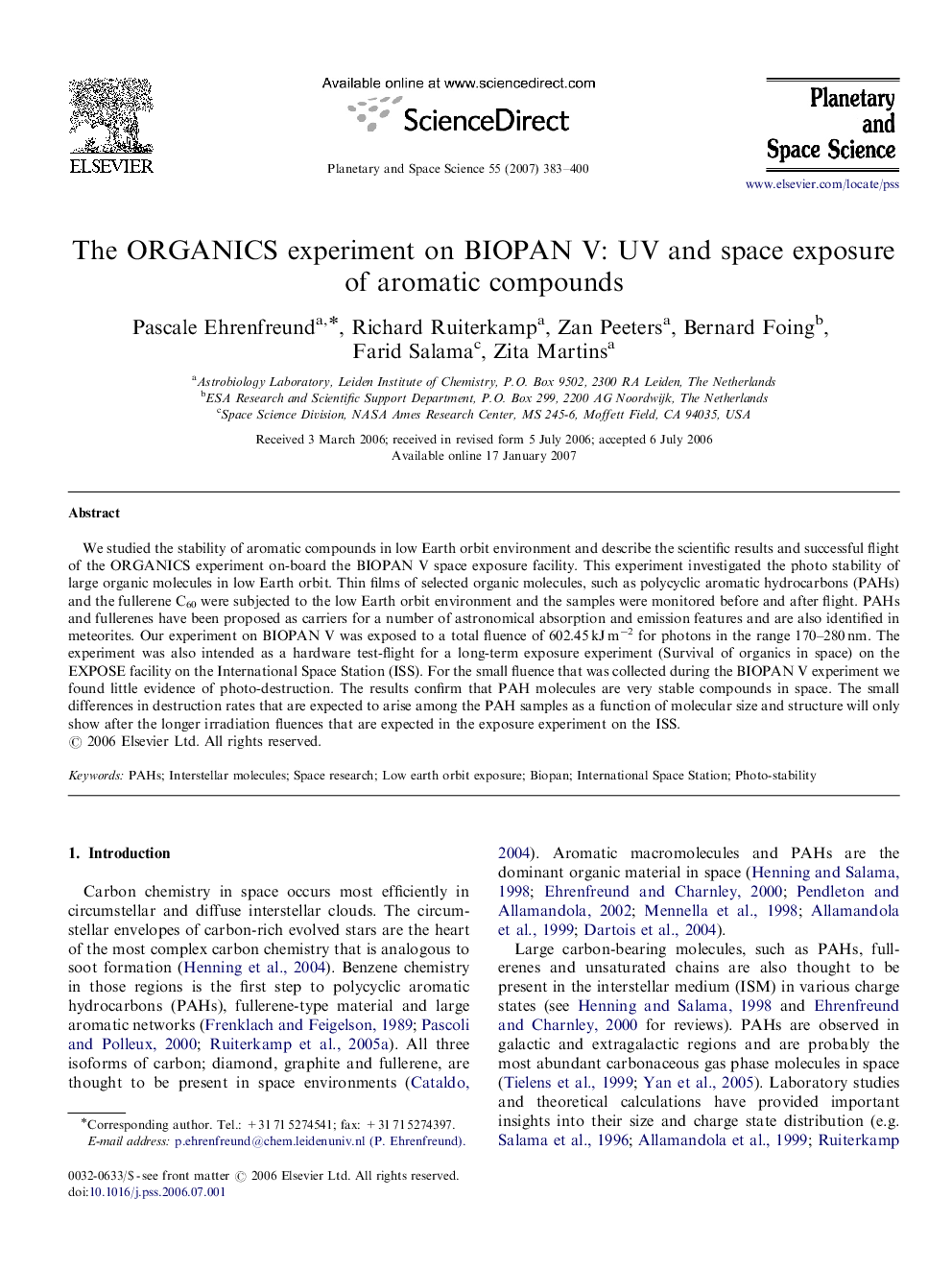| Article ID | Journal | Published Year | Pages | File Type |
|---|---|---|---|---|
| 1782654 | Planetary and Space Science | 2007 | 18 Pages |
Abstract
We studied the stability of aromatic compounds in low Earth orbit environment and describe the scientific results and successful flight of the ORGANICS experiment on-board the BIOPAN V space exposure facility. This experiment investigated the photo stability of large organic molecules in low Earth orbit. Thin films of selected organic molecules, such as polycyclic aromatic hydrocarbons (PAHs) and the fullerene C60 were subjected to the low Earth orbit environment and the samples were monitored before and after flight. PAHs and fullerenes have been proposed as carriers for a number of astronomical absorption and emission features and are also identified in meteorites. Our experiment on BIOPAN V was exposed to a total fluence of 602.45Â kJÂ mâ2 for photons in the range 170-280Â nm. The experiment was also intended as a hardware test-flight for a long-term exposure experiment (Survival of organics in space) on the EXPOSE facility on the International Space Station (ISS). For the small fluence that was collected during the BIOPAN V experiment we found little evidence of photo-destruction. The results confirm that PAH molecules are very stable compounds in space. The small differences in destruction rates that are expected to arise among the PAH samples as a function of molecular size and structure will only show after the longer irradiation fluences that are expected in the exposure experiment on the ISS.
Related Topics
Physical Sciences and Engineering
Earth and Planetary Sciences
Geophysics
Authors
Pascale Ehrenfreund, Richard Ruiterkamp, Zan Peeters, Bernard Foing, Farid Salama, Zita Martins,
